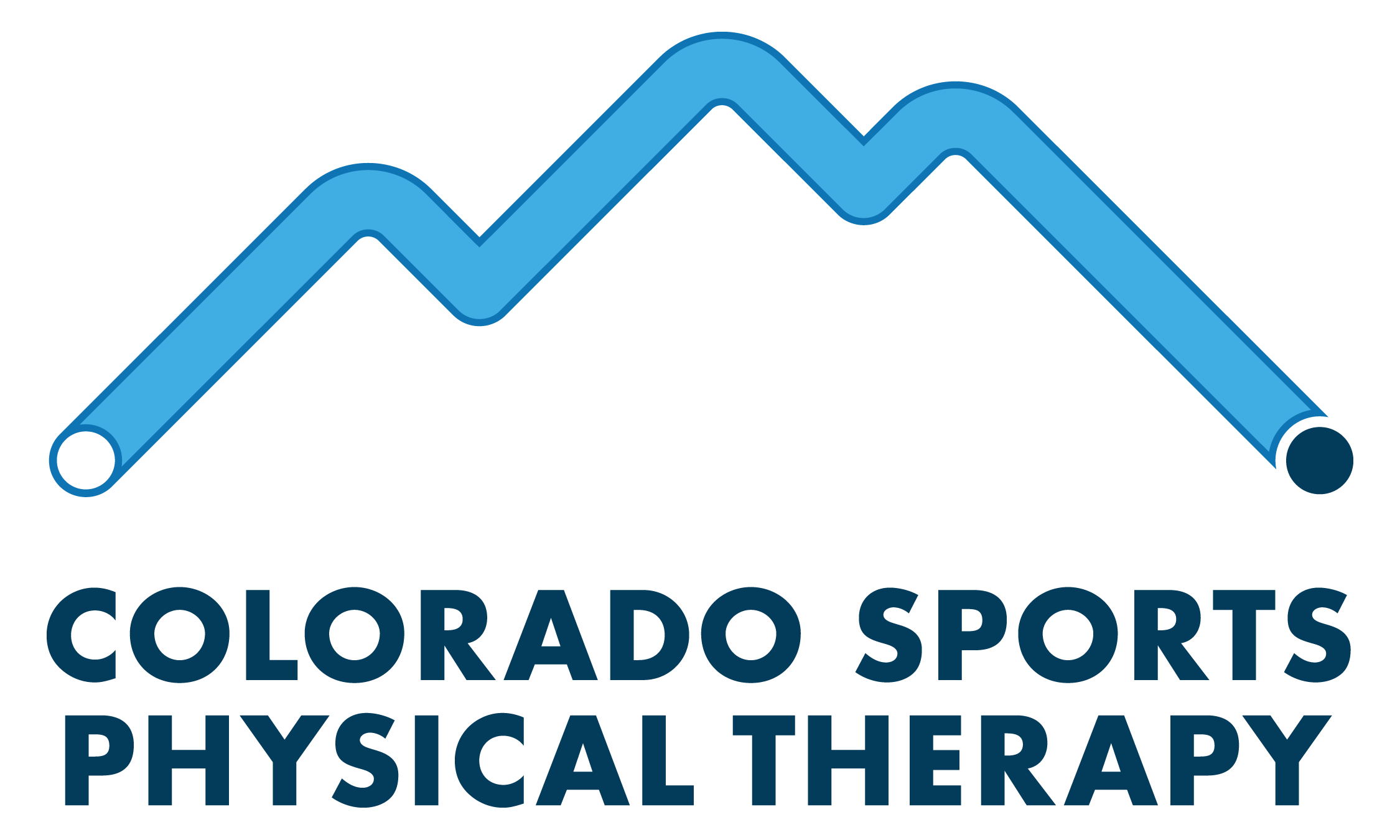Nothing Good Happens the Longer Your Foot Is On the Ground
It’s Springtime in Colorado and as more Coloradoans are taking their fitness outdoors, many are turning to running due to its ease of accessibility, minimal equipment requirements, and overall health benefits. Despite being an incredibly popular sport, the lower extremity injury rate in runners is relatively high, with a recent review by the British Journal of Sports Medicine estimating that up to 75% of recreational runners sustain a running-related injury at least once annually (1). There are numerous intrinsic and extrinsic factors that can play a role in running-related injuries including (but not limited to) lower extremity kinematics (i.e. the way the body moves independent of any forces acting upon it), age, BMI, running mechanics, terrain, and training volume. Some of these factors are obviously modifiable, and some are not.
Running is a highly repetitive single-leg impact activity. While running, the stance leg is responsible for absorbing up to 3 times a person’s body weight with each foot strike (1). With that being said, it is no surprise that running-related injuries are highly associated with the magnitudes and rates of impact forces when the foot strikes the ground. The longer a runner’s foot is on the ground with each foot strike, the more strength and range of motion is needed to properly control that limb and the forces acting upon it. Based on this, it would make sense to try and decrease the amount of time your foot is in contact with the ground with each step in order to reduce the forces going through your legs. This is where making small adjustments in cadence, or step rate per minute, can come in.
Cadence is a popular buzzword within the running community, and with good reason. When a runner increases their cadence, they are increasing the number of steps they are taking per minute. Numerous studies in the last few years have linked increases in cadence to reduced load on joints of the lower extremity as well as soft tissues such as the Achilles tendon and plantar fascia. Changes in cadence as small as 5% have been shown to produce statistically significant reductions in energy absorbed at the ankle, knee, and hip (2). A study published in 2014 by Lenhart et. al. reported that a 10% increase in step rate was shown to reduce peak knee joint forces by 14% in 30 healthy recreational runners (3). In addition to reduction in load to lower extremity tissues, increasing cadence has also been shown to improve running economy, which is a measure of efficiency in runners (i.e. the amount of oxygen your body requires at a particular pace – think of it as “fuel economy” for the body) (4). Improved running economy can translate to improved performance as the body demands less oxygen for a given pace/distance, potentially allowing a runner to cover more distance or increase pace with less fatigue.
As a clinic, we often discuss cadence with our runners to help determine what an “ideal” cadence may be for them in order to manage current injuries and/or prevent future ones. If you feel cadence may be something you can improve upon, call us to set up an evaluation and stay tuned for a future blog post on ways to calculate and improve cadence with a few simple, at-home drills!
*The title of this blog is derived from a great quote by Chris Johnson, a physical therapist out of Seattle who specializes in treating endurance athletes.
References:
1. van Gent RN, Siem D, van Middelkoop M, van Os AG, Bierma-Zeinstra SM, Koes BW. Incidence and determinants of lower extremity running injuries in long distance runners: a systematic review. Br J Sports Med. 2007;41:469-480
2. Schubert AG, Kempf J, Heiderscheit BC. Influence of stride frequency and length on running mechanics: a systematic review. Sports Health. 2014;6(3):210–217. doi:10.1177/1941738113508544
3. LENHART, RACHEL L.1,2; THELEN, DARRYL G.1,2; WILLE, CHRISTA M.3; CHUMANOV, ELIZABETH S.3; HEIDERSCHEIT, BRYAN C.1,3 Increasing Running Step Rate Reduces Patellofemoral Joint Forces, Medicine & Science in Sports & Exercise: March 2014 - Volume 46 - Issue 3 - p 557-564 doi: 10.1249/MSS.0b013e3182a78c3a
4. Quinn, Timothy J.1; Dempsey, Shauna L.1; LaRoche, Dain P.1; Mackenzie, Allison M.2; Cook, Summer B.1 Step Frequency Training Improves Running Economy in Well-Trained Female Runners, Journal of Strength and Conditioning Research: July 11, 2019 - Volume Publish Ahead of Print - Issue - doi: 10.1519/JSC.0000000000003206
